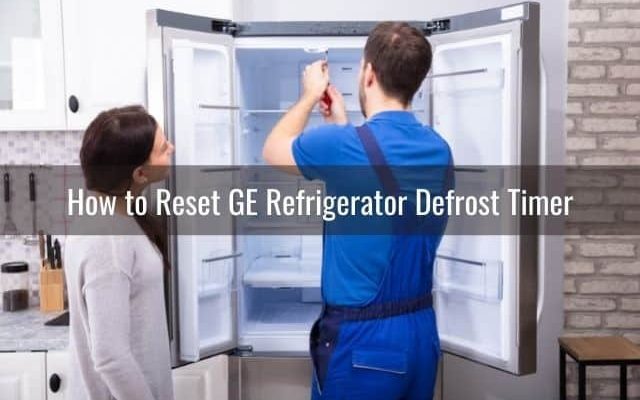
Think of your refrigerator’s error codes like a check engine light in a car. They’re signals that something is amiss. The “HE” code is specifically tied to a potential problem with the heating or defrosting components. This could be due to a faulty defrost heater or sensor that isn’t working as it should. But don’t worry, we’ll go through everything you need to know to address this issue, and possibly even prevent it from happening again. So, grab yourself a cup of coffee, and let’s dive in.
Understanding the Error Code
Before you can fix your refrigerator, it’s crucial to understand what’s happening under the hood, so to speak. The “HE” in the error code stands for “Heating Error,” and is usually related to the defrost system. Your fridge periodically warms up its interior to melt away any frost buildup, ensuring that your food stays fresh and your fridge doesn’t turn into an ice cave. The components involved are the defrost heater, thermostat, and sometimes a timer or a control board. If any of these fail to do their job, you get the dreaded “HE” message.
Imagine your fridge as having its team of little elves, each tasked with a different job to keep things running smoothly. The defrost heater is like the elf responsible for clearing out the snow to make room for new deliveries. When this elf takes an unexpected break or doesn’t show up for work, snow piles up, causing congestion and chaos. This is where the error code comes into play, alerting you that the defrost elf needs some assistance.
Sometimes, the issue could be simple, like a temporary glitch in the electronic systems—much like when your computer needs a reboot. Other times, it might point to a more significant issue, such as a malfunctioning component that may need replacement. Either way, knowing what the code means is the first step in getting your fridge back on track.
Step-By-Step Reset Process
Alright, now that you understand the “HE” code, let’s talk about resetting your GE refrigerator to clear the error. Think of this process as giving your fridge a gentle nudge to get back on track. First, you’ll want to unplug your refrigerator from the power source. This is like hitting the reset button on your electronic devices—except it involves pulling a plug. Leave it unplugged for about 10 minutes to allow its systems to recalibrate.
While you’re waiting, take a moment to check for any visible issues inside your fridge. Open the freezer compartment and look for excessive frost buildup. If you see ice caked on the walls, you might have found the root cause of your problem. This is akin to finding a clue in a mystery movie—it gives you an idea of what might be going wrong.
After the 10 minutes are up, plug your refrigerator back in. The display should reset, and the error code should disappear. If it doesn’t, you may need to try one more thing: a manual defrost. This involves turning off your refrigerator and leaving the doors open for several hours to allow any ice to melt away naturally. Once it’s fully defrosted, plug it back in and see if the error has cleared.
What If Resetting Doesn’t Work?
So, you’ve tried resetting, and the error is still there? Don’t panic. Sometimes issues are a bit more stubborn and require a bit more attention. If the “HE” code persists, it might be time to dig a little deeper. This could mean that a component within the defrost system—such as the heater, thermostat, or even the control board—might be malfunctioning. These parts sometimes wear out, much like a light bulb, and need replacing.
Think of your fridge as having a support team that includes professionals who can lend a hand. If the problem persists after a reset, it might be wise to call in a certified technician. They have the tools and expertise to diagnose and fix more complex problems. It’s like calling a plumber when your drain is clogged beyond your DIY skills—they know what to do and have the right equipment.
Alternatively, if you’re feeling adventurous and a bit tech-savvy, you might consider checking the components yourself using a multimeter—a device used for measuring electrical values. However, if you’re unsure about doing this safely, seeking professional help is the best course of action. Safety first, right?
Preventing Future Errors
Now that you’ve tackled the error, let’s talk about preventing it from happening again. Regular maintenance of your refrigerator can save you a lot of hassle down the road. Much like getting your car serviced to prevent breakdowns, periodic cleaning and inspection of your fridge can keep it running smoothly. Every few months, clean out any old food and wipe down the interior to prevent frost buildup and odor.
Ensure that the vents inside the freezer are not blocked by food items. This allows proper airflow, which is essential for the defrost system to work correctly. Think of airflow like the blood flow in your body—it needs to circulate freely to keep everything functioning properly.
Additionally, avoid overpacking your fridge. When it’s too full, air can’t circulate properly, leading to uneven cooling and potential frost buildup. Just like you wouldn’t cram too many files in a cabinet, give your refrigerator’s contents some room to breathe.
By following these preventative tips, you’ll extend the life of your refrigerator and minimize the chances of running into the “HE” error code again. Remember, a little attention now can save you a lot of time and trouble later.
